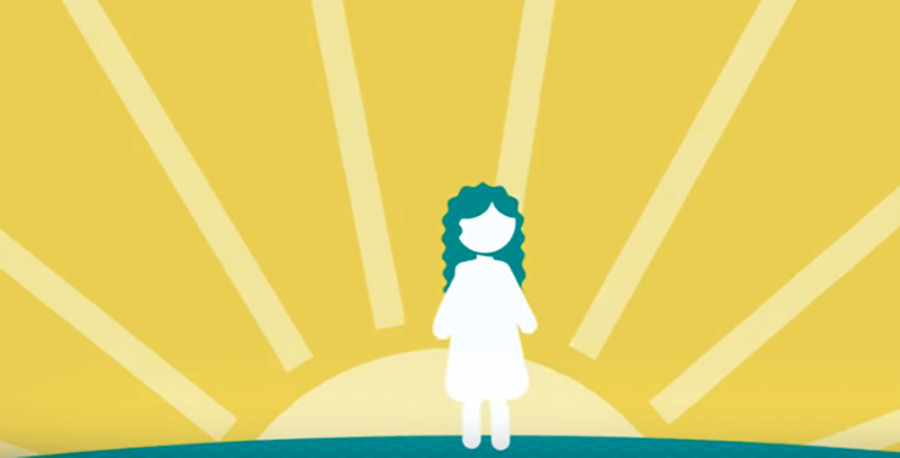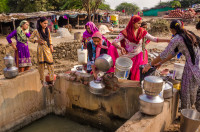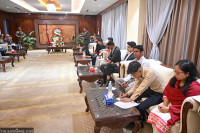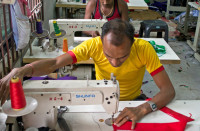Opinion
For a better today and tomorrow
The longer we take time to invest in adolescent girls, the more Nepal will miss opportunities for growth
Giulia Vallese
UN Secretary-General Ban-Ki Moon once said, “The longer we delay, the more we will pay”. My mind was on this quote during a recent visit to four districts of the far-western region of Nepal to see firsthand how adolescent girls are being empowered with social and financial skills to prevent child marriage and other harmful practices, and how influential leaders and community members can be part of these efforts. This is an important component of the support from United Nations Population Fund (UNFPA) to the women and children’s offices and other partners in these far-western districts. The visit offered great learning opportunities.
Manamati Nepali (18) of Hatairaj VDC in Baitadi district, Kaushila Saud (19) of Duni in Achham and Priyanka Bhatta (18) of Samaiji in Dadeldhura were particularly inspiring girls we met during our visit. Manamati is working in her VDC to change the social norms that place greater value on sons than on daughters. She not only resisted her own early marriage nearly two years ago, but also stopped that of two young girls in her VDC.
Kaushila and her colleagues are working tirelessly to ensure that adolescent girls’ rights to education, health and protection are safeguarded. She was briefly deprived of education and was out of school. However, she convinced her parents and could pursue her dream to become a teacher. Priyanka and members of the Adolescent Girls’ Circle (AGC) of her village often make door-to-door visits to raise awareness about harmful practices like child marriage and Chhaupadi as well as about the importance of education.
Need for support
There are many teenage girls in the Far West and parts of Nepal whose quest for education has remained elusive, robbing them of their future and putting them at the receiving end of gender inequality. They are facing many problems related to their health and development such as early marriage, teenage pregnancy, abuse, HIV, STIs, sexual violence and more.
These young girls can play a key role in changing their situation if they are provided with the information and means to make choices. So they need our support to end all forms of discrimination they face, to rid them of coercion or violence so that they can exercise their rights and make responsible decisions, including those related to sexual and reproductive health and rights. Their ability to fulfil their potential rests on how much we can invest in them and in their communities.
This year’s theme for World Population Day (July 11) is ‘Investing in Teenage Girls’, which is more appropriate and urgent for Nepal than ever. The country has a window of opportunity provided by its large youth population. The longer we take time to invest in adolescent girls, the more the country will miss opportunities for growth in every sector. As world leaders have adopted new Sustainable Development Goals, we have a platform and a common consensus on what is needed.
Alarming scenario
Adolescent girls (10-19 years) are a significant portion of Nepal’s population. There are more than six million teenagers, of whom about half are girls—one fourth of the country’s total population according to Census 2011 and Population Projection 2016. They can be a powerful force for progress if equipped with education, health and skills to realise their full potential. However, around 24.5 percent of girls aged 15-19 are currently married or in union and 16 percent of women aged 20-24 years have already had at least one live birth before reaching 18. Around 35 percent of women aged 10-24 are dropping out of school/college/university. The adolescent birth rate is 71 births per 1,000 women aged 15-19 years—one of the highest in South Asia.
Teenage girls are also exposed to different forms of violence such as physical, mental and psychosocial abuse. They endure the consequences of dowry, child labour, sexual harassment and intimidation at work, trafficking, forced prostitution, acid-throwing, and rape including marital rape. Health and development of teenage girls in the country are seldom prioritised and they are still deprived of education, one of the major determinants of employment, marriage, social mobility and nutrition. The data raise the alarm that investments in teenage girls are too low and that little attention has been paid to the specific problems they are
facing at a time when they are entering adulthood.
Some of the grassroots campaigns undertaken by adolescent girls in the Far West as well as influential community leaders resonate powerfully with me. However, the fact that we are still far from empowering them to reach their full potential is a matter of concern. This suggests that the government of Nepal, development partners, civil society, private sector and all stakeholders need to scale up their investment in teenage girls to support their dignity, well-being, choices and opportunities.
Demographic dividend
The new 2030 Agenda for Sustainable Development provides an unprecedented opportunity for teenage girls to claim their rights, realise their aspirations and transform our world. If Nepal can continue investing in the health and education of its youths, especially teenage girls, and create opportunities for them to fulfil their potential, it will also be better positioned to realise a demographic dividend, which can combat poverty and propel economic growth.
At UNFPA, we look forward to continuing our work to promote sexual and reproductive health and rights for all teenage girls, prevent and respond to all forms of violence and help teenagers live in dignity and enjoy their full human rights. Let us together strive for a better Nepal for teenage girls by adequately investing in them.
Giulia is UNFPA Country Representative for Nepal




 17.12°C Kathmandu
17.12°C Kathmandu










